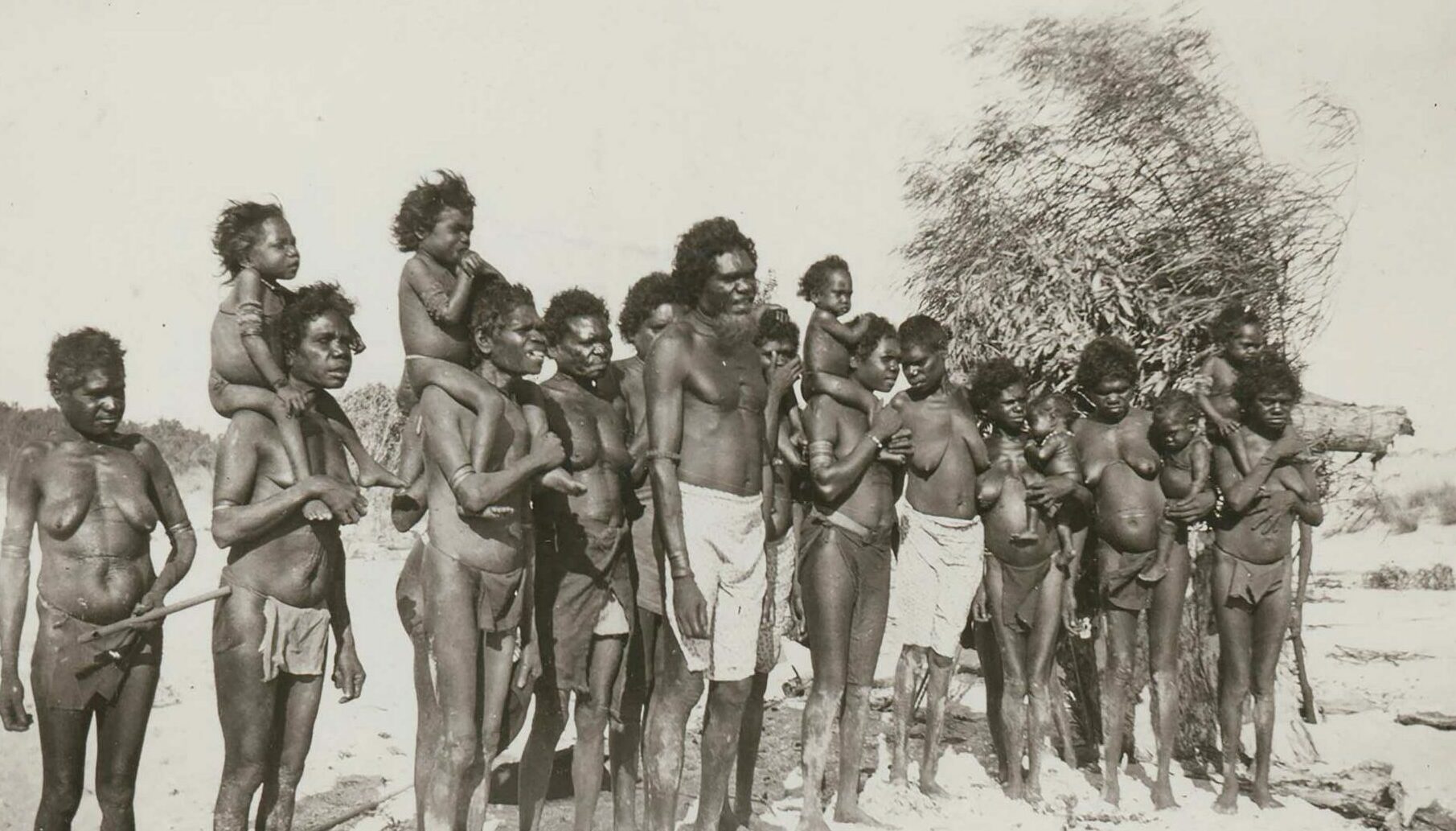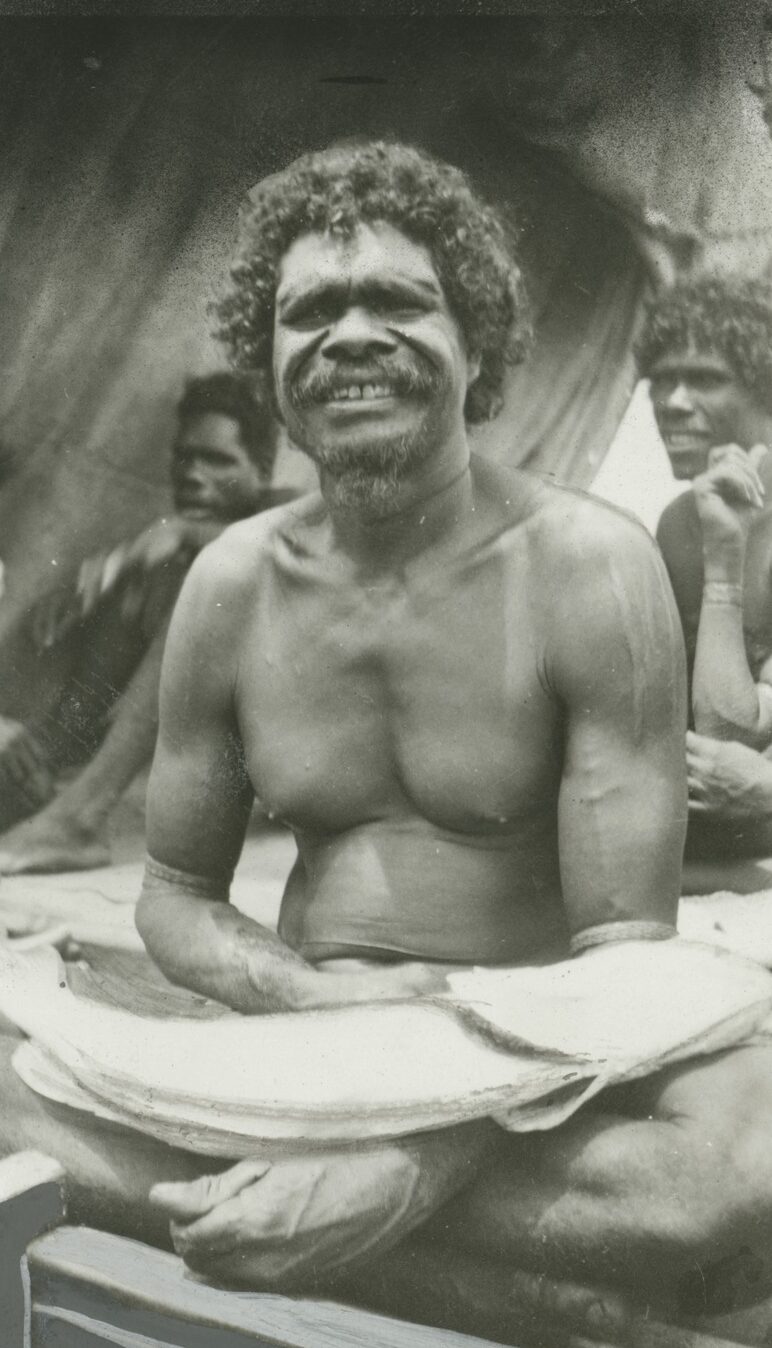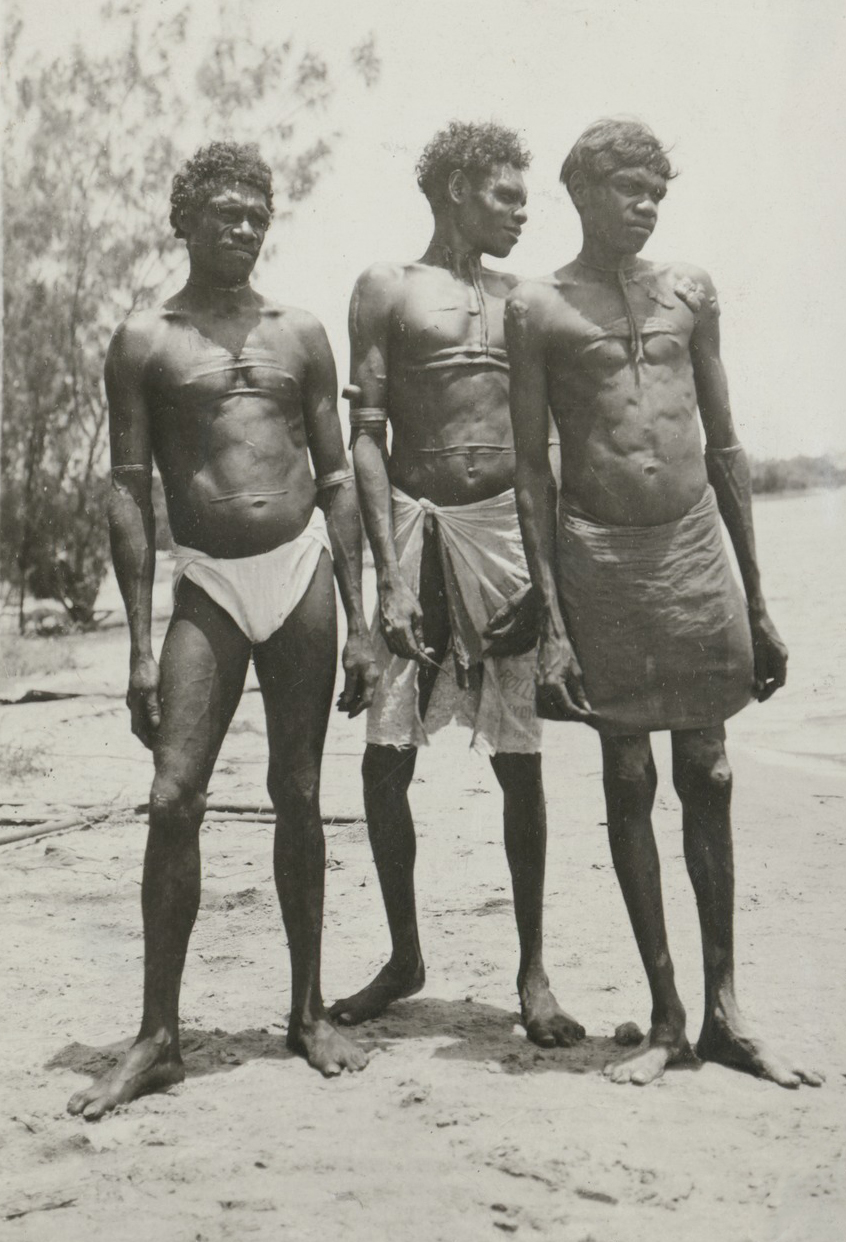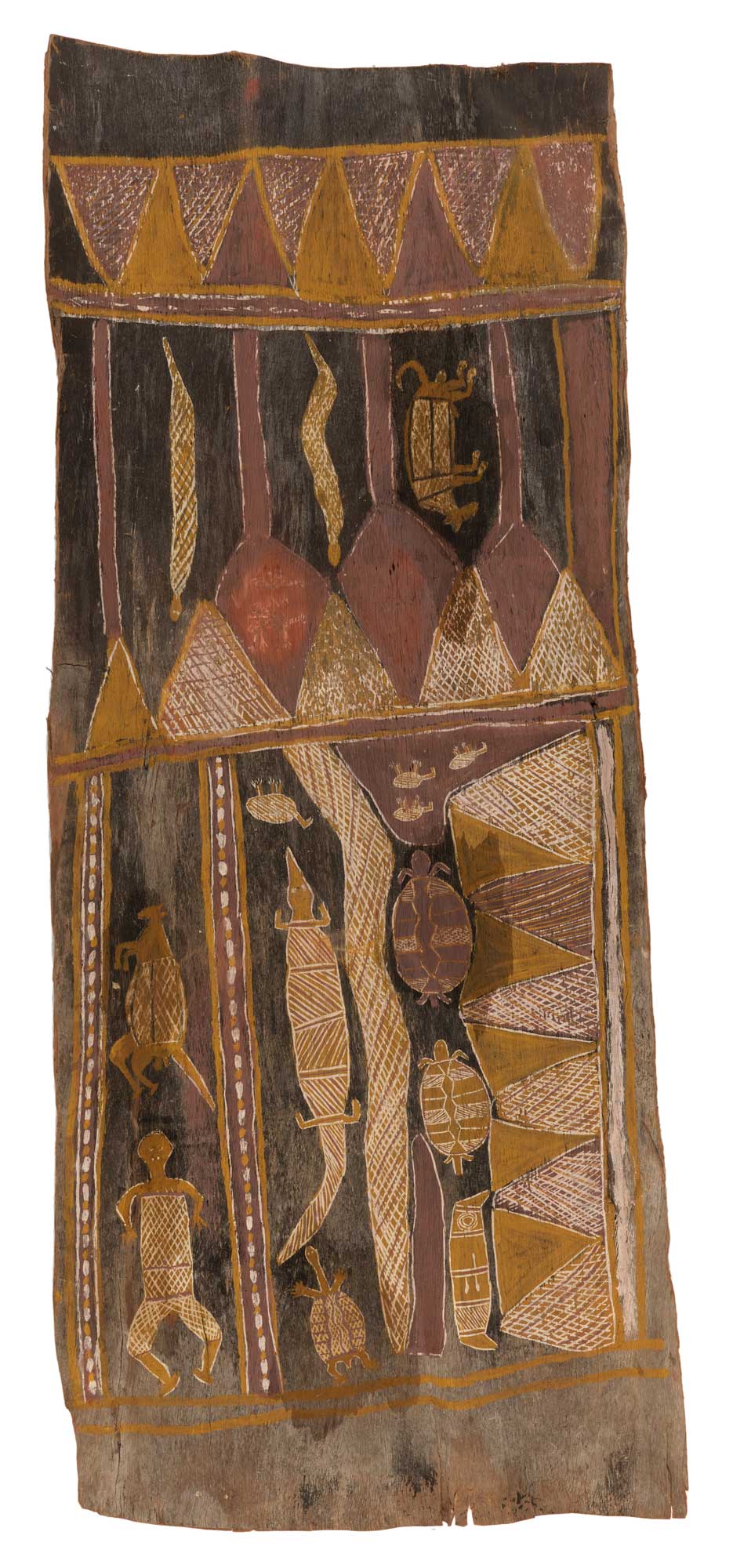1930s
In the 1930s, Yolŋu in northeast Arnhem Land found their lives radically interrupted by the arrival of outsiders, who begin to exert their influence on Yolŋu people and Country. They responded with an outpouring of art, beginning what would become a globally significant art movement.
1931
The Australian government creates the Arnhem Land Aboriginal Reserve. While it grants Yolŋu semiautonomy over their lives, it also limits their movement in the region.
1932
Five crew members of a Japanese fishing ship are killed after disrespecting elders of the Djapu’ clan at Caledon Bay
1933
A police expedition led by Constable Ted Morey investigates the killings of the Japanese fishermen. One of the party, Constable Albert McColl, is speared and killed by Dhäkiyarr Wirrpanda on Woodah Island.
1934
Mäw’ Munuŋgurr, Natjiyalma Munuŋgurr and Ŋarkaya Munuŋgurr—sons of the great Djapu’ clan leader Woŋgu Munuŋgurr—are convicted of killing the fishermen and sentenced to 20 years’ hard labor. Dhäkiyarr Wirrpanda is sentenced to death but is later acquitted. He disappears after being released, presumed murdered by associates of McColl.
1935
As tensions mount, the anthropologist Donald Thomson travels to Arnhem Land on a peace mission. After meeting with Woŋgu Munuŋgurr in July, he facilitates the exchange of mälk (message sticks) between Woŋgu and his three sons in prison and negotiates their release. In return, Woŋgu agrees to maintain peace in northeast Arnhem Land.
In July, Woŋgu paints his first bark for Thomson. Thomson’s diverse collection now resides at the Ian Potter Museum of Art, University of Melbourne, and Museums Victoria, Melbourne.
Reverend Wilbur S. Chaseling (superintendent, 1935–37) establishes the Yirrkala Mission on Rirratjiŋu clan land on behalf of the Methodist Overseas Mission. Chaseling begins to commission bark paintings from artists at the Yirrkala Mission. Within a year, he sends large collections of artifacts to museums in Melbourne, Sydney and Brisbane. His collection is now held by Museums Victoria, Melbourne.
1938
Reverend Clyde Toft assumes leadership of the Yirrkala Mission and works with the missionary Harold Thornell (1938–43). Chaseling returns as superintendent (1939–41) and works with the missionary Rupert Kentish (1943–44).
1939
The Australian government develops a policy of assimilation that aims to integrate Aboriginal Australians into the mainstream population. It is fully sanctioned in 1939 and, in 1951, is officially endorsed by the Australian states and the federal government.




